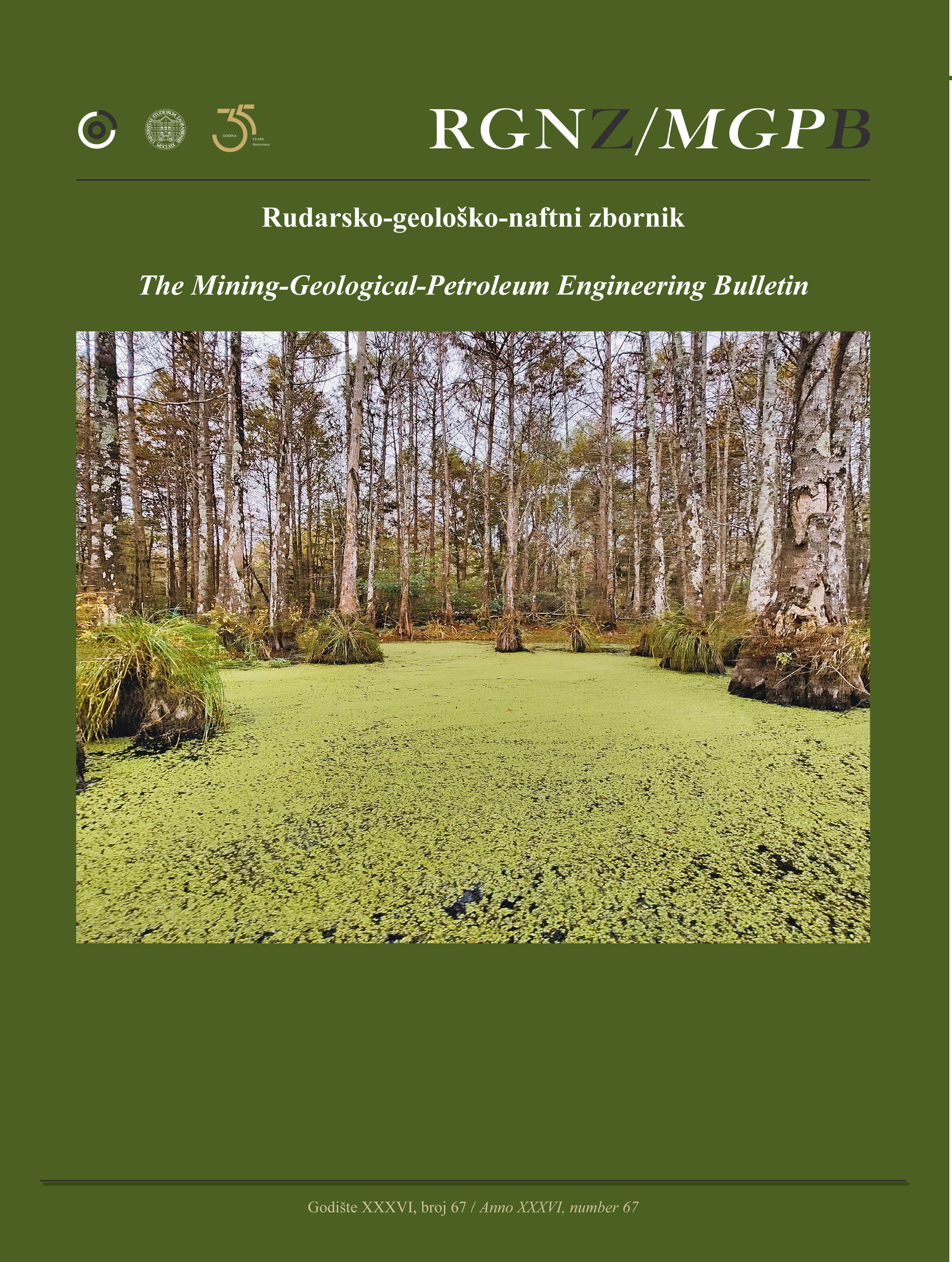Accurate prediction of drill bit penetration rate in rock using supervised machine learning techniques base on laboratory test data
DOI:
https://doi.org/10.17794/rgn.2024.1.10Keywords:
rate of penetration, cooling/lubricating fluid, simple linear regression, lasso regression, ridge regressionAbstract
Knowing the rate of penetration of a drill bit in rocks is among the most important parameters in their behaviour measurement. However, the direct measurement of ROP in rocks is a high-cost and time-intensive process. Therefore, obtaining the ROP parameter through a method other than direct measurement can be very useful and effective. Predictive machine learning methods are among the strong and precise techniques for the indirect measurement of ROP. To this end, 492 samples were tested under different UCS, µ, WOB, and conditions to obtain the corresponding ROP. To achieve an accurate model, three methods of linear regression analysis, lasso regression, and ridge regression were compared in terms of prediction accuracy. These models were compared through performance criteria of the prediction process and error-based charts. The performance criteria were measured using three measures: mean absolute percentage error, D-squared pinball score, and mean Poisson deviance error. For the MAPE index, the Lasso and Ridge models performed the best with values of 0.2557. Concerning the D2PS index, the linear regression model and Ridge performed better with values of 0.4083 and 0.4025, respectively. Finally, for the MPDE index, the Ridge model provided a more accurate performance with a value of 0.0105. For a better comparison, an objective function was created and calculated by combining these three indicators. The results showed the best rank for the Ridge model with an estimated value of 659.475. Finally, it was concluded that the Ridge model is a reliable and accurate model for predicting the ROP.
Downloads
Published
How to Cite
Issue
Section
License
Copyright (c) 2024 Shahrokh Khosravimanesh, Masoud Akhyani, Akbar Esmaeilzadeh, Reza Mikaeil, Mojtaba Mokhtarian Asl

This work is licensed under a Creative Commons Attribution 4.0 International License.
Creative Commons-BY
Authors who publish with this journal agree to the following terms:
In agreeing this form, you certify that:
- You read the ethical codex of the RGN zbornik available at journal web.
- You submitted work is your original work, and has not previously been published and does not include any form of plagiarism.
- You own copyright in the submitted work, and are therefore permitted to assign the licence to publish to RGN zbornik.
- Your submitted work contains no violation of any existing copyright or other third party right or any material of an obscene, libellous or otherwise unlawful nature.
- You have obtained permission for and acknowledged the source of any illustrations, diagrams or other material included in the work of which you are not the copyright owner.
- You have taken due care to ensure the accuracy of the work, and that, to the best of your knowledge, there are no false statements made within it.
- All co-authors of this submitted work are aware of, and in agreement with, the terms of this licence and that the submitted manuscript has been approved by these authors.
Publication licence
You retain copyright in your submitted work, according to journal license policy (CC-BY). By signing this form you agree that RGN zbornik may publish it under the publication licence. In summary the licence allows the following:
Anyone is free:
- To copy, distribute, display, and perform the work.
- To make derivative works.
Under the following conditions:
- The original author must always be given credit.
- The work may not be used for commercial purposes.
- If the work is altered, transformed, or built upon, the resulting work may only be distributed under a licence identical to this one.
Exceptions to the licence
In addition to publishing the work printed under the above licence, RGN zbornik will also enable the work to be visible online.
The journal editorial can change the licence rules anytime but it cannot retroactively restrict author(s) rights.


